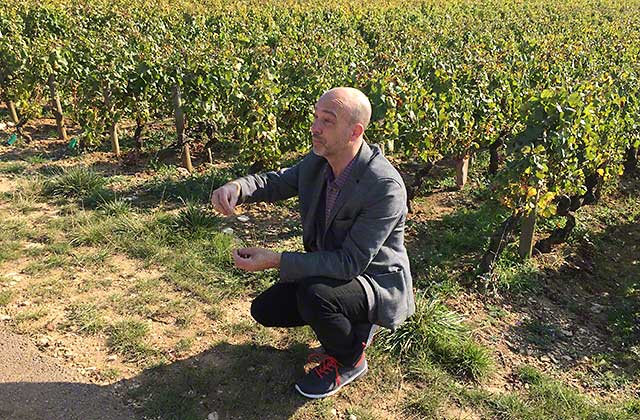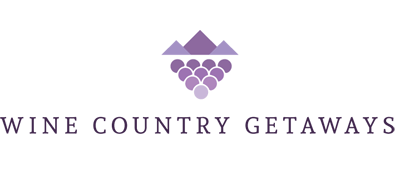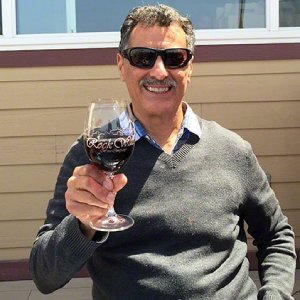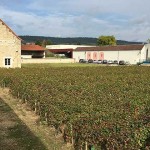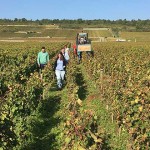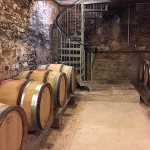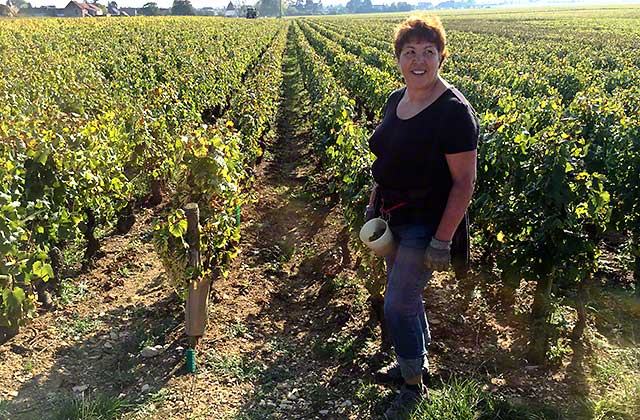
Traveling Burgundy Wine Country
Burgundy is like no other wine region I have previously visited. Our one-week stay in Burgundy sadly was not enough; there was much we did not see. We never made it to many of the villages we had hoped to visit. Most of our activity was centered near our rental home in the village of Puligny Montrachet and around Beaune, the main city of the Burgundy wine region.
Chardonnay and Pinot Noir are the only grapes that are widely grown in Burgundy. There is a decent amount of the grape Aligoté that is grown, but that is secondary to Chardonnay and Pinot Noir. There are four distinct AOC’s or appellations in Burgundy and it is important to know about this if you want to learn about Burgundy wines.
Four distinct appellations – lowest to highest
Bourgogne
This is a wine made from grapes grown in the flat lands of Burgundy and they border the area just below the villages. Here there is less sun, less rocky soil, but more water. A Bourgogne can come from vineyards in one village or from several village vineyards. These wines are less in price and quality, but nonetheless there are some very good wines made from these vineyards. We tasted many for about 12 to 15 Euros. Here in California, my wine shop carries Bourgogne wines for about $20.
Village
The wine is named after the village where the grapes are grown, such as Chablis, Pommard or Gevrey Chambertin. The grapes must all be from vineyards located within the particular village. These vineyards are at an elevation slightly higher than the Bourgogne, and with more complex soils.
Premiere Cru
These vineyards are located higher up and the soil is rockier with fewer nutrients. The vines must struggle more and the roots grow deep.
Grand Cru
These are the best vineyards in Burgundy. There are only 33 designated Grand Cru vineyards in Burgundy. These vineyards produce exceptional quality wines. These wines command very steep prices. The wines of Romanee Conti sell for more than $2000 per bottle.
In Burgundy you will not see the word Chardonnay or Pinot Noir on the label. The label will tell us the village and the vineyard where the grapes were grown. It will also show the producer’s name and the appellation. There is said to be more than 4000 producers in the Burgundy region, an area that stretches 88 miles from the north to south. Most of these producers are very small, and they grow and make the wines. Most are family-run operations and the wine is made in their homes with small underground caves.
How to read a Burgundy wine label.
Yield of grapes per appellation
A hectare vineyard is equal to a 10,000 square-meter area and planted with 10,000 vines
- In the Bourgogne this produces 8000 to 10,000 bottles of wine.
- In the Village appellation one hectare produces 6000 to 8000 bottles of wine.
- In the Premiere Cru vineyards one hectare produces a maximum of 6000 bottles.
- In the Grand Cru vineyard, one hectacre produces 3500 to 5000 bottles.
The most intriguing feature of Burgundy are the wall-to-wall vineyards surrounding each village. I spent most of my days exploring the vineyards of Puligny Montrachet. Our rental home was here, so it was convenient to drive or cycle through the vineyards of this village. The most amazing thing is the difference from one vineyard plot to another. I saw a small Premier Cru vineyard divided into smaller plots, and different individuals owned these plots. In one plot of perhaps 10 rows of vines, you could see indications of organic farming, i.e. cover crops. In the next plot over, the opposite – use of chemicals. I learned that the organic movement is rapidly increasing each year, but according to one grower only about 25% of the growers practice organic farming.
Another intriguing fact about Burgundy Vineyards is the difference in soils within a vineyard and the difference among the vineyards located in the same village. Limestone is usually present, but the limestone is mixed in with other soil types. This is what makes Burgundy wines unique. The climate can also vary as the elevation rises. More water, sun, and wind can affect the terrior of the vineyards. When we say terroir in this case we must include the grower. This is the person who works the vines by tilling, pruning, using cover crops, or using chemicals. It is said in Burgundy that “We grow our wine.” This is the mantra we heard over and over in Burgundy.
We tasted many White Burgundies, Burgundy, and Aligote wines from all four AOC’s during the week. Some of our tastings were in tasting rooms (caves), some at wineries, and several we purchased at restaurants or wine shops. White Burgundies were my favorites, especially from the Montrachet area. The acidity and mineral characteristic were beautifully blended. In the white Burgundies (Chardonnay) we tasted, there was never a hint of oak or creamy butter characteristics as you find in California Chardonnay wines. This is the Chardonnay grape in its purest form, a reflection of where the grape was grown. The red Burgundy wines were floral, soft and complex, with a long finish to them. We love the spice and the minerality in the Burgundy wines.
I certainly hope that this will not be our final trip to Burgundy. It is fair to say that, to learn as much as possible about the Burgundy, one must spend at least two weeks there. There are five main wine regions in Burgundy: Chablis, Côte de Nuits, Côte de Beaune, Côte Chalonnaise and Mâconnais. We missed Chablis, Côte Chalonnaise and Mâconnais. Hiring a guide is very helpful. The person we rented our home from, Peter Norton, recommended our guide, Pascal Wagner, a Burgundy wine educator and sommelier. The cost of our tour guide was 250 Euros for a full day for five of us. In our opinion, a bargain price for the opportunity to walk through vineyards and meet with small growers.
